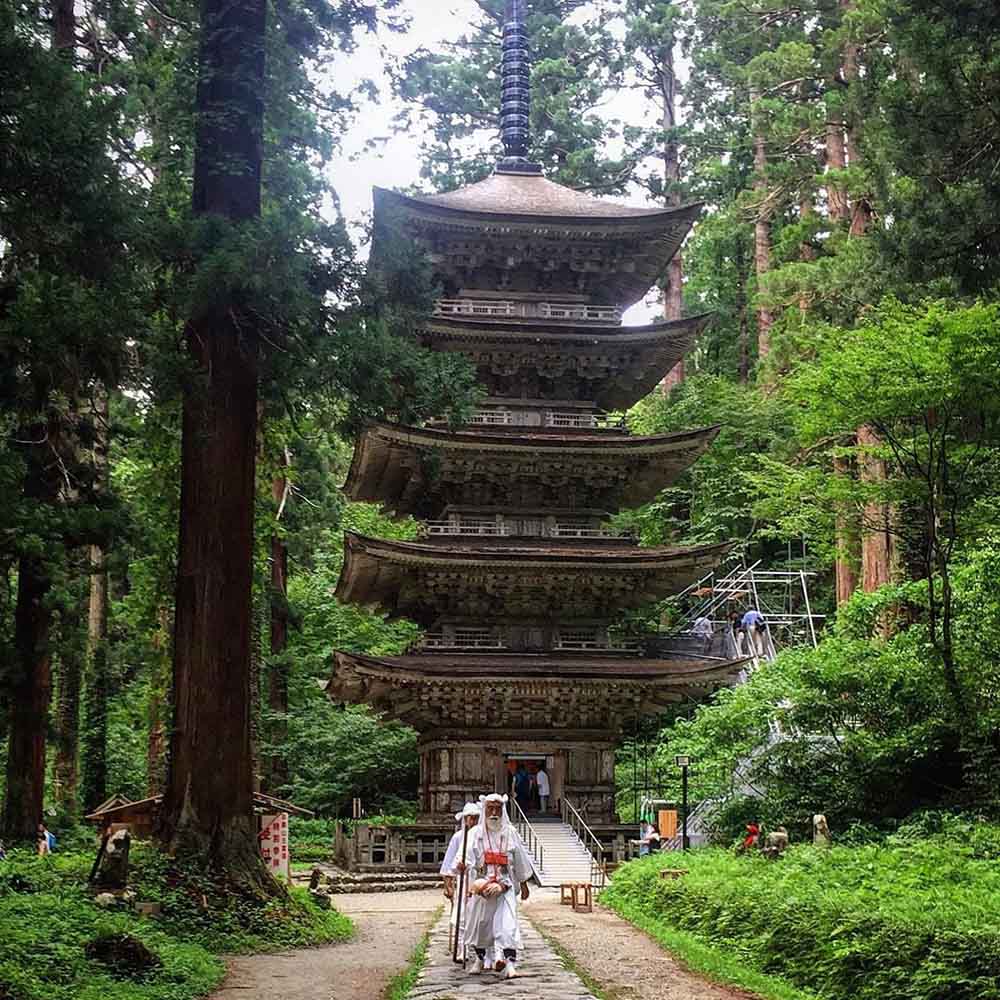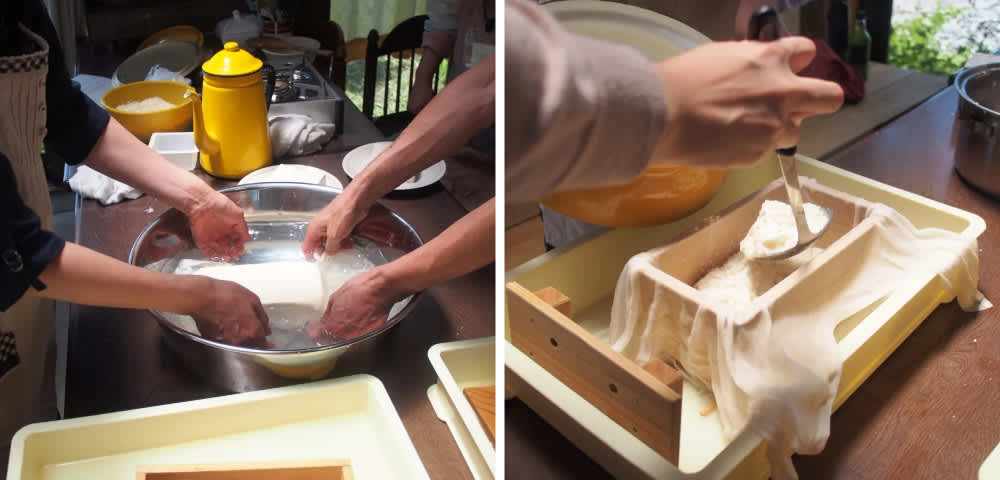Off-the-beaten-path activities that encapsulate Japan’s unique culture
With a culture that seamlessly blends ancient and modern, Japan is a place filled with incomparable experiences. From temple stays to remote hot springs and culinary workshops, there’s so much to partake in and it’s easy to miss out without researching in advance. Here are three unique activities in gorgeous locations that are truly off-the-beaten-path.
Training with Yamabushi in Dewa Sanzan
Dewa Sanzan is a trio of sacred mountains located in Bandai-Asahi National Park in the northern prefecture of Yamagata. Narrow paths wind past shrines and temples surrounded by towering ancient cedars, making for a mysterious and evocative landscape. This remote place gave rise to the practice of Shugendo, a uniquely Japanese mountain faith which mixes nature worship, Shinto, and esoteric Buddhist beliefs. Here, visitors can partake in a healing and cleansing journey guided by white-robed mountain mystics called Yamabushi. Yamabushi practices and traditions are over 1,500 years old. They are now accessible to visitors in four different forms, from a one-day guided hike to a 4-day master’s training which takes place over all three mountains, representing the present, past, and future. Appealing to those who wish to not merely visit a place but be transformed by it, the Yamabushido packages include experiences such as waterfall meditation, guided reflection, night walks, and secret rituals which will leave you feeling refreshed and transformed.
Learn More: https://www.yamabushido.jp

Access to Dewa Sanzan by public transportation requires some planning, which helps preserve the mystique of this remote area. Buses depart for each of the three mountains from Tsuruoka Station, which can be reached by train from Tokyo either by crossing the mountains and going north through Niigata or traveling first north to Sendai and then west. The journey through Niigata is particularly beautiful as the train and road run along the Japan Sea. Rental cars are also an excellent option for more flexible travel.
Tofu-Making in Nagano
Tofu, a staple of Japanese cuisine, is now well-known in the western world and popular in vegetarian cuisine. Tofu is also an essential component of traditional Buddhist vegetarian food, called shojin ryori. Made with great care using vegetables and tofu prepared in a variety of ways, shojin ryori is a tour de force of Japanese culinary techniques—all without meat. While you can find restaurants serving shojin ryori, the best way to experience it is through Shukubo, or temple stay. For those who haven’t tasted tofu in Japan, it might be a surprise to learn how many different ways it can be prepared, and also how much the freshness of the tofu and water used can affect the flavor. To really get to know the delicate flavors and processes involved in tofu production, the best way is to make it yourself! At Sennen Tofu (“thousand-year tofu”), a small family-run shop deep in the mountains of Nagano, you can learn this ancient process, tour the workshop, gain knowledge of tofu-making, and make your own. Tofu making workshops are held from March to November, while from December to February you can learn to make frozen tofu, a delicacy which evolved over 200 years ago in the area due to the cold temperatures.

You can access Chino, Nagano by a 2-hour limited express train from Shinjuku Station towards Matsumoto.
Indigo Dying in Kojima
Thirty minutes outside Okayama City lies Kurashiki, a charming town with canals and a quaint historical district. However, its claim to fame is Kojima, a district known as the Denim Capitol of Japan. An area which cultivated cotton since the Edo period, Kojima had long been a center for textile manufacture. In the 1960s and 70s, with western influence on the rise, it became the birthplace of premium Japanese denim. The industry developed original processing techniques (Japan was the first to create the “faded crease effect” in denim) and dying techniques to produce new textures and deep indigo colors. Kojima’s “Jeans Street” is lined with over 30 shops selling premium Japanese denim products, including flagship stores for some of Japan’s leading denim brands. One company, Betty Smith, was the first to produce jeans for women and now offers denim-making experiences in English which allow you to create your own custom pair of jeans in around an hour. Two museums at Betty Smith give visitors a chance to learn about denim history and get a close-up look at the workshop while artisans make made-to-order jeans. Not only for fashion and history aficionados, Kojima is also a fantastic destination for seafood as it is located along the Seto Inland Sea. Restaurants in the Kurashiki Setouchi Kojima Hotel even offer panoramic views of the Great Seto Bridge, making it a great way to relax after exploring Jeans Street.

Traveling to Kurashiki by train is simple. The Tokaido-Sanyo Shinkansen (bullet train) runs from Tokyo to Okayama, and Kurashiki is less than a 20-minute ride by local train from Okayama Station.



















































